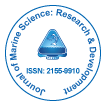Nosso grupo organiza mais de 3.000 Séries de conferências Eventos todos os anos nos EUA, Europa e outros países. Ásia com o apoio de mais 1.000 Sociedades e publica mais de 700 Acesso aberto Periódicos que contém mais de 50.000 personalidades eminentes, cientistas de renome como membros do conselho editorial.
Periódicos de acesso aberto ganhando mais leitores e citações
700 periódicos e 15 milhões de leitores Cada periódico está obtendo mais de 25.000 leitores
Indexado em
- Índice de Fonte CAS (CASSI)
- Índice Copérnico
- Google Scholar
- Sherpa Romeu
- Abra o portão J
- Genâmica JournalSeek
- Chaves Acadêmicas
- PesquisaBíblia
- Diretório de Periódicos de Ulrich
- Biblioteca de Periódicos Eletrônicos
- RefSeek
- Diretório de indexação de periódicos de pesquisa (DRJI)
- Universidade Hamdard
- EBSCO AZ
- OCLC – WorldCat
- Acadêmico
- Catálogo online SWB
- Biblioteca Virtual de Biologia (vifabio)
- Publons
Links Úteis
Diários de acesso aberto
Compartilhe esta página
Abstrato
Environmental Impacts of Cage Culture in Lake Victoria, Kenya
Zadock Omach1 *, Winnie Owoko2 , Bruno Odhiambo2 and Taiwo Alare3
Cage farming has become a common practice of rearing fish in marine and freshwater systems worldwide. Fish farming in cages in most East African countries seems to be a new technology, and this came about as a result of the decline in catches of fish around the Lake Victoria basin and the growing demand for protein from fish, which has ultimately resulted in strengthening strategies of boosting aquaculture productions to fill the growing gap of productions from capture fisheries. We conducted an experimental cage culture study at Anyanga, Dunga, Kiwa, and Mulukhoba beaches, Lake Victoria, Kenya, to investigate the impacts of cage aquaculture on the environment. We identified three locations at each beach for sampling. Physio-chemical parameters: Dissolved Oxygen (DO), Temperature, pH, and conductivity were taken. The water samples were then analyzed for nutrients: Total Nitrogen, Total phosphorus, and Ammonium. There were no significant changes in both physio-chemical characteristics of the water and nutrient concentrations. Even though nutrient concentrations were within the recommended ranges, close monitoring of the basin should be encouraged since it is a hyper-trophic lake.
Diários por Assunto
- Agro e Aquicultura
- Alimentação e Nutrição
- Bioquímica
- Ciência da Computação
- Ciência de materiais
- Ciencias ambientais
- Ciências Clínicas
- Ciências Farmacêuticas
- Ciências gerais
- Ciências Médicas
- Ciências Sociais e Políticas
- Ciências veterinarias
- Economia e Contabilidade
- Enfermagem e cuidados de saúde
- Engenharia
- Engenheiro químico
- Física
- Genética e Biologia Molecular
- Geologia e Ciências da Terra
- Gestão de negócios
- Imunologia e Microbiologia
- Informática
- Matemática
- Química
Revistas clínicas e médicas
- Anestesiologia
- Assistência médica
- Biologia molecular
- Cardiologia
- Cirurgia
- Dermatologia
- Diabetes e Endocrinologia
- Doenças infecciosas
- Enfermagem
- Fisioterapia e Reabilitação
- Gastroenterologia
- Genética
- Hematologia
- Imunologia
- Medicamento
- Medicina Reprodutiva
- Microbiologia
- Nefrologia
- Neurologia
- Odontologia
- Oftalmologia
- Oncologia
- Ortopedia
- Pediatria
- Pesquisa Clinica
- Pneumologia
- Psiquiatria
- Toxicologia

 English
English  Spanish
Spanish  Chinese
Chinese  Russian
Russian  German
German  French
French  Japanese
Japanese  Hindi
Hindi